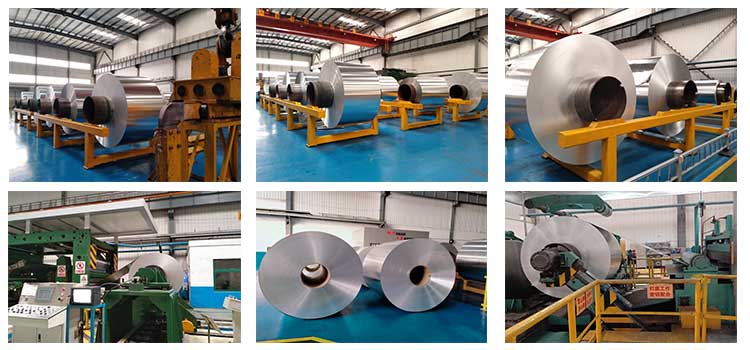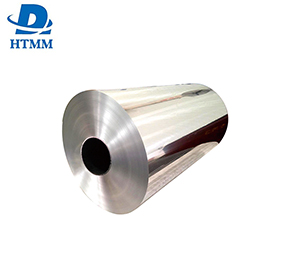.jpg) Household Use Aluminium Foil Raw Material Jumbo Roll
Household Use Aluminium Foil Raw Material Jumbo Roll
At present, the aluminum alloys used in the production of household foils on the market are generally 1235 and 8011 alloys. The use of 1235 alloy to produce household foil has the advantages of good surface quality and fewer pinholes in the aluminum foil. However, due to the low alloy content and soft strength, the rolling performance is poor, resulting in low production efficiency and low yield. However, 8011 alloy is used. In the production of household foil, although the strength is high and the rolling stability is good, due to its own characteristics, the number of pinholes often exceeds the standard, which affects the use of aluminum foil.
1. A household aluminum foil material, which is characterized in that its alloy composition and weight percentage are Si02~025%
Fe 0.77~0.83%Cu0.05%Zn01%T0.05%, A1 margin.
a.Smelting, casting and rolling, smelting household aluminum foil materials and using low-over-casting-rolling technology for casting-rolling, the thickness of the billet after casting-rolling is 70+0.2mm;
b. Cold-roll the bad material thickness to 34~45mm for the homogenization annealing of the bad material. The homogenization annealing process is: at 580℃, heat preservation for 26~28 hours; after the furnace is cooled to room temperature, continue cold rolling, cold rolling 0.7 When the thickness is ~1mm, the intermediate annealing is carried out. The annealing process is: heat preservation at 380°C for 8-14 hours; then cold-rolled to 0.35mm for trimming;c. The trimmed material is rolled to the thickness of the finished product through foil, and then slit and annealed to obtain the final product. The annealing step is: annealing at an annealing temperature of 200℃ for 4~8h, and then at an annealing temperature of 215~280℃ Lower annealing for 20-25h.
8011o Household Aluminum Foil While ensuring thermal insulation performance, items can be folded, compressed, and stacked when empty





